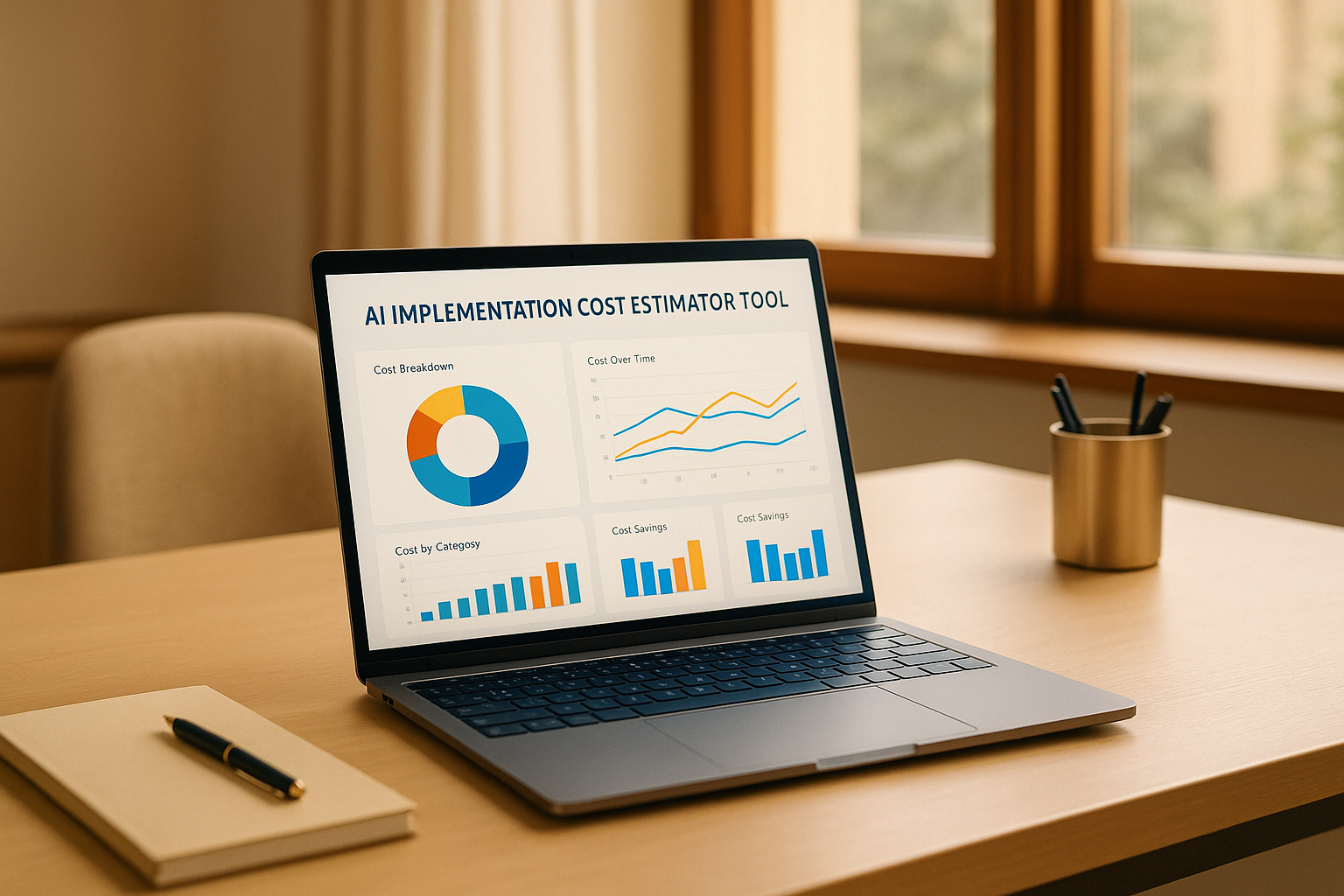
Load balancing ensures AI systems run efficiently, even under heavy demand. By distributing traffic across multiple servers, it prevents overload, reduces latency, and maintains reliability. This is critical for AI applications like chatbots, recommendation engines, and machine learning models that process complex tasks and handle unpredictable traffic spikes.
Load balancing is essential for maintaining fast, reliable, and cost-effective AI systems, especially as demand grows and tasks become more complex.
Load balancing plays a crucial role in optimizing AI performance, especially when dealing with complex machine learning models, real-time inference requests, or unpredictable traffic surges. Here’s how it makes a difference:
Load balancing allows AI systems to scale effectively by distributing incoming requests across multiple servers or resources. This approach eliminates bottlenecks, which is vital for AI applications requiring intensive computations, like natural language processing or computer vision.
One of the most noticeable benefits is the reduction in response times. By efficiently managing traffic, load balancers enhance application responsiveness and minimize network latency. For instance, when users interact with AI-powered chatbots or request predictions from machine learning models, load balancers ensure these requests are routed to the nearest or least congested server.
This capability is especially valuable during sudden traffic spikes. Imagine a recommendation engine during a flash sale or a language model handling thousands of simultaneous queries. Load balancing dynamically adjusts to these surges in real time, ensuring smooth operations without delays. This not only improves user experience but also optimizes resource usage during peak demand.
Beyond handling traffic efficiently, load balancing ensures servers are used effectively, spreading workloads evenly and maximizing computational power. This leads to better performance and cost savings for AI systems.
For enterprises, the financial and operational benefits are significant. Advanced load balancing solutions, leveraging adaptive algorithms and real-time data, can deliver up to 43% savings in operational expenses, 90% faster application provisioning, and a 27% boost in DevOps productivity. Moreover, research highlights that AI-driven load balancing frameworks can reduce resource overhead by 30% and improve response times by 25%.
For AI workloads - whether training models or running inference on large datasets - this optimized resource allocation ensures organizations get the most out of their infrastructure while maintaining fast, reliable service for end users.
Ensuring consistent uptime is another critical advantage of load balancing. By automatically redirecting traffic when servers fail or become overloaded, it keeps systems running smoothly during high-demand periods. This reliability is indispensable for AI applications that support real-time decision-making or continuous service.
But load balancing goes beyond simple failover protection. AI-driven tools can monitor, diagnose, and address failures, creating a self-healing system. Paired with load balancing, this adds extra layers of resilience, reducing the risk of service disruptions.
Real-world examples illustrate this well. Terminix, for instance, uses a Gateway Load Balancer to manage 300% more throughput, showcasing how effective load balancing can handle dramatic demand increases. Similarly, a gaming company using NGINX for load balancing improved user retention by 40% by reducing latency.
"When you build modern AI applications for enterprises, there has to be a very high level of performance, resilience, security, and elasticity."
– Chris Wolf, global head of AI and advanced services, VCF Division at Broadcom
This level of reliability becomes even more critical as AI systems take on mission-critical tasks. Whether it’s processing financial transactions through AI fraud detection or supporting healthcare diagnostics, system failures can have serious consequences. Load balancing ensures redundancy and automatic failover, keeping these essential services operational even when individual components encounter issues.
Balancing workloads effectively is crucial for getting the best performance out of AI applications. Choosing the right strategy can help manage both steady and unpredictable traffic, ensuring smooth operations.
Static load balancing follows pre-set rules to distribute traffic among servers. It’s a good fit for AI systems with steady workloads, like model training jobs that run on a fixed schedule. This method is straightforward and requires minimal resources. However, it doesn't adapt to changes in real time.
Dynamic load balancing, on the other hand, continuously monitors server performance and adjusts traffic distribution as needed. This approach is ideal for handling unpredictable workloads - think chatbot interactions that see spikes during peak hours or variable data processing in computer vision systems. However, it requires more complex algorithms.
| Feature | Static Load Balancing | Dynamic Load Balancing |
|---|---|---|
| Best for | Predictable AI workloads | Variable traffic patterns |
| Setup complexity | Simple | Complex |
| Resource overhead | Low | Higher |
| Adaptability | Fixed rules only | Real-time adjustments |
| Fault tolerance | Limited | Better recovery |
These foundational strategies pave the way for more advanced algorithms tailored to specific needs.
Round Robin distributes requests evenly across servers in a rotating order. It's effective when all servers have similar capabilities.
Least Connections sends traffic to the server with the fewest active connections. This method works well for AI systems where processing times can vary significantly.
Weighted Distribution assigns workloads based on server capacity. For example, GPU-accelerated servers handling deep learning tasks can take on heavier loads, while CPU-based servers manage lighter tasks.
Least Response Time directs requests to the server with the quickest current response time. This is particularly useful for real-time AI applications where every millisecond matters.
Real-time adaptive algorithms rely on live metrics like CPU and GPU usage, memory availability, and more to dynamically distribute workloads. These are perfect for complex AI environments with diverse tasks.
In addition to these algorithms, global distribution strategies can further enhance performance for large-scale systems.
Global Server Load Balancing (GSLB) extends load balancing across different geographic locations, creating a network of AI processing hubs worldwide. This strategy is essential for global AI systems, allowing them to reduce latency and improve reliability. For instance, if a user in Tokyo requests AI-powered recommendations, GSLB ensures the request is routed to a nearby data center in Asia instead of a distant one.
Many industries benefit from GSLB, such as global e-commerce platforms and healthcare systems, which rely on it to maintain performance and meet compliance standards.
"GSLB is the foundation which is ensuring AI systems remain reliable, fast, and resilient." - DynConD
Emerging client-side GSLB takes this a step further by shifting some routing decisions to the user's device, speeding up responses. Additionally, GSLB contributes to energy efficiency. With data centers consuming roughly 1.5–2% of the world’s electricity as of 2023 - and this figure expected to double by 2030 - GSLB helps optimize workloads, cutting energy waste while keeping performance high.
Setting up load balancing in AI workflows demands a thoughtful mix of real-time tracking, automation, and expert input. Below, we'll break down how to monitor system performance, automate failover and scaling, and leverage expert support for seamless integration.
Keeping an eye on system performance is crucial to spotting issues like overloaded servers, slow response times, or network delays. These insights guide load balancing decisions, ensuring traffic is distributed efficiently. Key metrics such as CPU usage and response times are consistently tracked to enable dynamic traffic adjustments.
Analyzing traffic patterns can pinpoint bottlenecks before they disrupt operations. Monitoring tools help map workload distribution across servers and flag anomalies that may hint at resource allocation issues. For AI systems handling varied workloads - like image processing or chatbot interactions - this visibility is critical to maintaining smooth operations.
Dynamic health score monitoring adds another layer of control. By automatically scaling thresholds during traffic surges, systems adapt to demand shifts without manual input. Routine health checks further identify potential failure points early on.
This monitoring data feeds directly into load balancer decisions. If a server shows signs of stress or irregular behavior, the system can quickly redirect traffic to healthier resources. This creates a feedback loop that constantly fine-tunes traffic distribution.
Automation plays a key role in ensuring uninterrupted service. Automated failover mechanisms reroute traffic to backup resources instantly when servers fail, avoiding downtime. Similarly, automated scaling adjusts resources to match workload demands.
Auto-scaling frameworks, like EC2 Auto Scaling paired with Application Load Balancers, can dynamically add or remove computing nodes based on real-time traffic, ensuring efficient handling of spikes without overprovisioning. Target tracking scaling ensures performance by monitoring specific metrics and adjusting resources to meet predefined goals. For predictable workloads - such as scheduled model training - scheduled scaling adjusts resources based on expected demand, saving costs.
For instance, during a high-traffic event, an AWS Application Load Balancer can manage millions of user requests across multiple EC2 instances while maintaining fast response times. If an EC2 instance fails, the load balancer redirects traffic to healthier servers, and read replicas take over database tasks.
Continuous monitoring tools complement these automated systems by catching issues early and triggering alerts before they impact users.
AI workflows are often complex, requiring specialized expertise to implement effective load balancing. Experienced AI integration teams bring a wealth of knowledge in creating scalable, reliable systems that meet the demands of modern AI applications.
"When you build modern AI applications for enterprises, there has to be a very high level of performance, resilience, security, and elasticity. Load balancers in the AI era must be able to manage services and fulfill enterprise requirements across multiple servers and clusters, because of the distributed nature of large inference and training jobs in private AI environments." – Chris Wolf, global head of AI and advanced services, VCF Division at Broadcom
Firms like Artech Digital excel in providing AI integration services that include tailored load balancing strategies. Their expertise spans AI-powered web apps, custom AI agents, advanced chatbots, and computer vision solutions, all designed with scalability and performance in mind.
Expert guidance is especially valuable for balancing the unique demands of different AI applications, from machine learning inference to real-time chatbot responses. These specialists design systems that optimize resources while maintaining cost efficiency.
Organizations implementing expert-driven load balancing solutions often see measurable benefits, including up to 43% savings in operational expenses, 90% faster application delivery, and a 27% boost in DevOps productivity. These gains come from systems that effectively balance performance with efficient resource use.
Additionally, professional integration services ensure that diverse AI components - like custom machine learning models, fine-tuned large language models, or computer vision applications - work together seamlessly. Tailored load balancing configurations help these systems perform at their best, ensuring smooth operations across the board.
Keeping AI systems running smoothly isn’t a one-and-done task. It requires ongoing fine-tuning, active monitoring, and consistent adjustments to keep up with shifting workloads. By using analytics effectively, organizations can continuously improve through performance adjustments and feedback loops.
Real-time analytics are key to making smarter decisions about load balancing. These tools sift through vast amounts of data to extract actionable insights, allowing organizations to detect and address issues as they happen.
Many companies rely on AI monitoring tools to track critical metrics and quickly identify anomalies. Predictive modeling takes it a step further by analyzing historical data to forecast peak usage times. This allows resources to be allocated in advance, especially in cloud environments, where such models can evaluate user behavior and server performance. The result? Reduced latency and a better user experience. In fact, adopting AIOps has been shown to cut unplanned downtime by up to 25% and boost IT productivity by 20%.
Insights from analytics and predictive models are only the beginning. To keep up with changing demands, systems need continuous performance tuning. This means monitoring key metrics - like latency, accuracy, throughput, and resource utilization - to ensure load balancing strategies remain effective.
It’s also important to validate predictive models regularly. Comparing forecasts to actual outcomes helps fine-tune the system based on real-world data. Adjustments such as modifying thresholds dynamically or grouping alerts can further streamline responses and prevent small issues from becoming major problems.
Effective system maintenance isn’t just about uptime. It’s about understanding how different components interact under varying conditions. By combining metrics, logs, and traces into a unified view, organizations can quickly identify and address issues. Machine learning tools for anomaly detection also help uncover patterns that might otherwise go unnoticed.
Real-time feedback from users - via surveys or in-app tools - provides valuable insights into their experiences. Feeding this data into a centralized analytics platform creates automated feedback loops that help refine system performance continuously. Monitoring models against live data also highlights when retraining is necessary or when load balancing strategies need updating to reflect changing usage patterns.
With 78% of organizations now using AI in at least one area of their business, having strong monitoring and feedback systems is critical for maintaining reliability, performance, and user satisfaction.
Load balancing has become an essential component for optimizing AI systems, delivering measurable improvements to business operations. The numbers tell the story: companies adopting advanced load balancing solutions report 43% savings in operational expenses, 90% faster application delivery provisioning, and a 27% boost in DevOps productivity. These are tangible benefits that come from effectively distributing AI workloads.
Modern AI applications demand high throughput to handle complex machine learning tasks and real-time inference. Chris Wolf, global head of AI and advanced services at Broadcom's VCF Division, emphasizes this point:
"When you build modern AI applications for enterprises, there has to be a very high level of performance, resilience, security, and elasticity. Load balancers in the AI era must be able to manage services and fulfill enterprise requirements across multiple servers and clusters, because of the distributed nature of large inference and training jobs in private AI environments."
The performance gains from load balancing come from several critical advantages:
To get started, evaluate your current AI workload patterns. Determine if your system operates at a large scale or requires high availability - both are indicators that load balancing can deliver immediate value.
Next, select the right algorithm for your needs. For example:
Also, implement health checks to ensure only functioning servers receive traffic.
Redundancy is crucial. Plan for backup systems to avoid single points of failure. This could mean deploying secondary load balancers or choosing cloud providers with built-in redundancy.
For organizations aiming to scale AI solutions like web apps, machine learning models, or chatbots, working with experts such as Artech Digital can streamline the process. Their knowledge of AI system architecture ensures load balancing strategies align with your specific workflows and goals.
The results speak for themselves. Companies like Terminix have achieved 300% greater throughput, while Second Spectrum cut hosting costs by 90% with advanced load balancing. These successes highlight how load balancing can give your AI systems the edge they need to maintain peak performance. By adopting these strategies, you can ensure your AI infrastructure keeps delivering exceptional results.
Load balancing plays a crucial role in improving the performance of AI tools by spreading incoming requests evenly across multiple servers. This approach stops any single server from getting overloaded, which helps maintain faster response times and ensures systems stay reliable.
By making the most of available resources, load balancing enables AI systems - like chatbots or recommendation engines - to manage heavy traffic without a hitch. This means users enjoy smoother interactions, minimal downtime, and the ability to scale effortlessly as demand grows.
Static load balancing operates on a set of predefined rules to distribute traffic without considering real-time server conditions. This method is simple and effective in environments where traffic patterns are stable and predictable. However, it can falter when faced with sudden surges in demand, potentially leading to inefficiencies.
Dynamic load balancing, in contrast, adjusts traffic distribution based on live server performance metrics. By responding to current conditions, it optimizes resource utilization, minimizes latency, and enhances the performance of AI systems. This approach is particularly beneficial for AI applications, which often deal with varying workloads, making dynamic methods a better choice for maintaining efficiency and reliability.
Global Server Load Balancing (GSLB) plays a key role in boosting the performance and reliability of AI systems by smartly distributing traffic across multiple servers and regions. By connecting users to the closest or least busy server, it helps cut down on latency and speeds up response times.
Beyond improving speed, GSLB strengthens system dependability by redirecting traffic during server failures or periods of heavy usage. This ensures continuous availability, allowing AI systems to maintain steady and efficient performance, even when faced with high demands.


